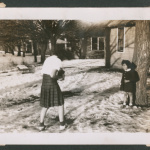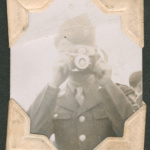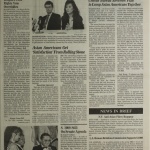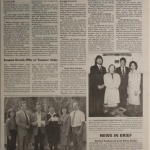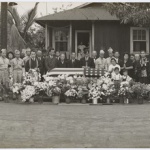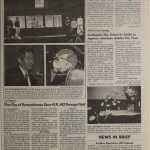Manzanar: Photographs by Ansel Adams of Loyal Japanese-American Relocation Center (exhibition)
Landmark exhibition of Ansel Adams ' photographs of Manzanar at New York's Museum of Modern Art. Opening on November 9, 1944, Manzanar was not only the sole major museum exhibition documenting the Japanese American incarceration to be displayed while incarceration was still ongoing, but arguably the only such exhibition to appear for the next twenty-five years.
The roots of Adams' Manzanar project stemmed from his desire to contribute to the war effort and from his friendship with Manzanar director Ralph Merritt . Wanting to document the strides "loyal" Nisei had made at Manzanar and to promote the patriotism and Americanism of Nisei as they started to leave the camp for resettlement away from the West Coast, Merritt approached Adams in the fall of 1943 about a photography project. Adams readily accepted and was given free reign at the camp, with the exception of being instructed by Merritt not to photograph barbed wire, armed guards, or guard towers. By the summer of 1944, Adams was displaying his photographs at Manzanar, making them available for purchase by inmates.
A few years prior, Adams, along with close friends Beaumont and Nancy Newhall, had been instrumental in founding a new department of photography at New York's Museum of Modern Art (MoMA). With Beaumont having enlisted in 1942, Nancy was now the acting curator of photography, and Adams showed her his Manzanar photos during a May 1944 visit. She was immediately enthusiastic, and they began to make plans for a fall showing of the photographs at MoMA, along with a traveling version of the show. However, objections by MoMA's leadership, along with financial factors, nearly led to the show's cancellation. Newhall was able to save the show, but only for a short, eight week run, in a basement auditorium and with some of text that appears in Adams' companion book, Born Free and Equal , excised. There would also be no traveling version.
The exhibition consisted of sixty-one photographs on twenty-six main panels. Most were displayed in groups of three on dark panels. Most of the images were either portraits of Nisei at Manzanar or images depicting daily life at the camp. With just one exception—that of a Spanish American War Veteran—no Issei or elderly people appear in the photos. There were also a number of landscape images of the type that Adams was known for.
The exhibition was generally well reviewed at the time, though Adams himself did not travel to New York to see it and was unhappy at the lack of publicity it received from MoMA. While some later criticized Adams' Manzanar images for not being overtly critical of the incarceration and for perpetuating stereotypes of Japanese Americans—often juxtaposing the images with the harder hitting images by Adams' friend and contemporary, Dorothea Lange —the exhibition and the larger Manzanar project nonetheless made a bold political statement for its time and no doubt introduced many Americans to wartime saga of Japanese Americans.
For More Information
Alinder, Jasmine. Moving Images: Photography and the Japanese American Incarceration . Urbana: University of Illinois Press, 2009.
Creef, Elena Tajima. Imaging Japanese America: The Visual Construction of Citizenship, Nation, and the Body . New York: New York University Press, 2004.
O'Toole, Erin Kathleen. "No Democracy in Quality: Ansel Adams, Beaumont and Nancy Newhall, and the Founding of the Department of Photographs at the Museum of Modern Art." Ph.D. dissertation, University of Arizona, 2010.
Overmyer, Deborah A., and Geoffrey J. Giglierano. "American Museums and Executive Order 9066: Who Has Told the Story, The Story That Was Told." In Alien Justice: Wartime Internment in Australia and North America . Edited by Kay Saunders and Roger Daniels. Queensland, Australia: University of Queensland Press, 2000. 234–54.
Last updated July 6, 2020, 4:15 p.m..

